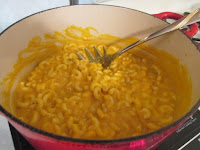He wasn't quite sure what he wanted on this little sliver of land, aside from "not grass," so I offered to do a little research. I learned, first of all, that this narrow plot is commonly known as the "hell strip," and second, that it's a tricky area to landscape. Plants need to be narrow enough that they won't impinge on the sidewalk and tough enough to survive with very little soil underfoot. And in our yard, they face the additional challenges of heavy clay soil, full afternoon sun, and hungry deer and groundhogs. After consulting several sources online to see what could stand up to this environment, I proposed a mixture of salvia and rudbeckia (Black-Eyed Susans), with maybe a few little thyme plants to fill in the gaps. We already had salvia seeds from our planter project, so we bought a packet of rudbeckia seeds (as well as one of English lavender, which happened to catch Brian's eye), and I figured we'd plant them in the spring.
But this weekend, Brian decided he didn't want to wait that long. With an extra free day from the holiday weekend, he wanted to tackle a project he could see through from start to finish. He started sketching out some plans on Friday, and on Saturday morning he was out there turfing out the sod from the hell strip. He didn't do the whole thing, just a 12-foot section starting at the edge of the driveway. Then he disappeared into the shop and emerged with a small, odd-shaped bracket he'd built out of some pressure-treated 2-by-4 lumber he had leftover from the planter project. This little lopsided trapezoid was just the right size to fill in the angle formed by the driveway apron, turning the rest of the hellstrip into an even rectangle.Next to that, he began laying out a small paved area that would serve as a landing pad for our trash and recycling bins. We didn't have any groundcloth to keep weeds out, but we had some heavy paper leaf bags that had proved equally effective at weed suppression in our garden paths. Laid flat, the bag was exactly wide enough to fill in the strip. Brian then began covering it with the last of the pavers leftover from our patio project, which had spent the last several years stashed in the shed. After filling in the cracks with fine sand (from a bag we acquired so long ago we've forgotten what it was originally for, he boxed in the remainder of the strip with more lengths of 2-by-4 and filled it up with topsoil. (He didn't nail these pieces together, so whenever he wants to expand the hellstrip planting, he can simply remove the end piece and add more boards to extend the frame.)By the end of Saturday, he had the entire strip neatly laid out and already looking much better than it had before. However, we knew that if we simply left it like this, it wouldn't stay nice-looking for long. The "grass" (which in our yard really means a mixture of crabgrass and other lawn weeds) would re-colonize the nicely-laid-out bed in short order if we didn't get something else in there. We didn't have time to start a bunch of salvia, lavender, and Black-Eyed Susans indoors, and if we sowed the seeds directly in the midsummer heat, they might not survive. So we decided to stop by the same nursery where we'd bought the plants for our large planters last spring and grab a few deer-tolerant plants to serve as place holders for the rest of the season.
Unfortunately, the nursery was closed, presumably on account of the holiday weekend. We tried the nearby Home Depot, but the only suitable plants we found there were a few salvias, which we already had at home. So we switched to Plan B: digging up and transplanting some of the salvia from our planters, along with any other plants we could scavenge from our flowerbeds. We found one large echinacea that had somehow seeded itself in our herb bed, as well as several smaller ones scattered closer to their parent plants. We also divided off several sections from our largest yarrow plant, since multiple sources had recommended yarrow as a suitable plant for hellstrips. However, the plant was so huge and floppy that we quickly realized the pieces extracted from it would never manage to stand upright on their own. Brian planted a couple of them next to the street sign at one end of the strip with a wire cage around them for support, hoping that once they're in full sun they'll eventually take on a more upright posture. The rest of the bed got filled in with a mixture of salvia and echnicacea and covered with a layer of wood-chip mulch. (We got this free from a neighbor of ours who got a large delivery of wood chips from a tree service and generously offered up the leftovers on Freecycle.)
This newly planted area doesn't exactly look polished, but between the paved area and the layer of mulch, it's fairly neat. Come next spring, we'll start a bunch of echnicea, salvia, and maybe lavender and plant the area more fully. But for now, it's a decided improvement on the "grass" we had there before.





















